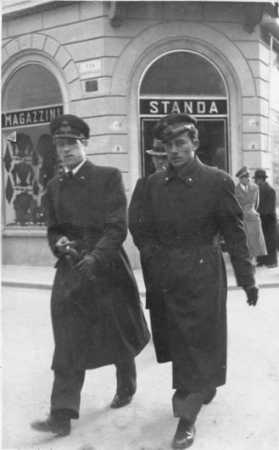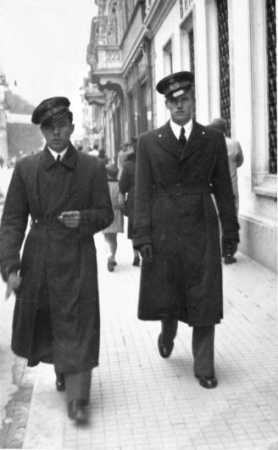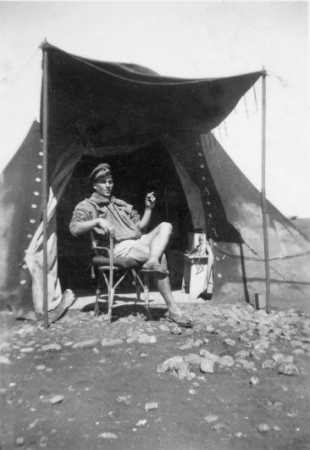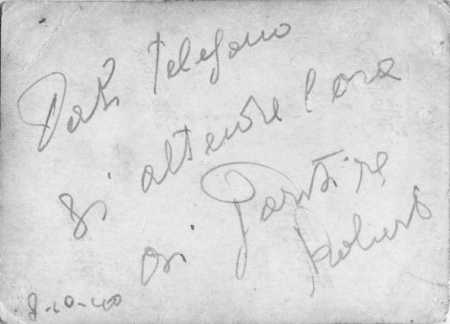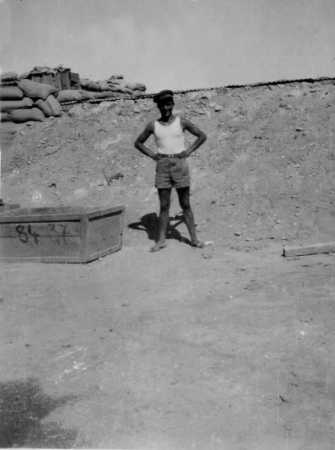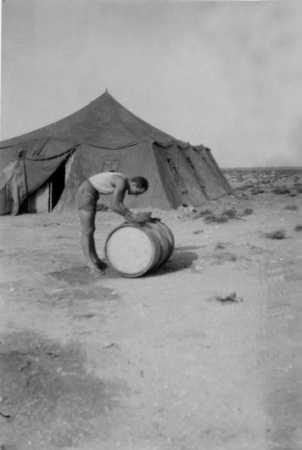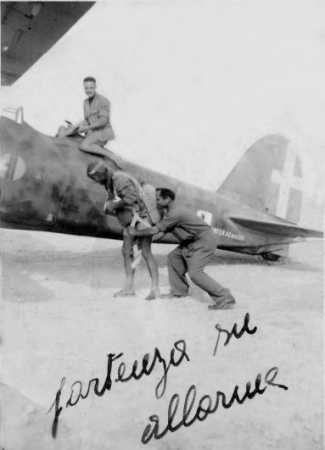Squadriglia.
.
It was composed of seven CR.42s from the 84
).
Capitano
Vanni, Tenente
Aurili and
Sergente
Steppi attacked first, followed by other pilots of the formation. During
the combat
Vanni’s
aircraft was hit by return fire and with the compressed air piping pierced,
he was forced to turn back. His wingmen continued the pursuit and claimed
the Blenheim shot down.
At 08:00 on 11 December, a mixed formation of CR.42s from
the 84
a and 94
a Squadriglie took off from Menastir
for a covering patrol over Italian troops retreating from Bug Bug. Participating
pilots from the 8
o Gruppo were Tenente
Vittorio Gnudi
and Sottotenente Giacomo Maggi in the last African mission of their unit,
while from the 10
o Gruppo there were Capitano
Luigi Monti,
Sottotenente
Paolo
Berti, Sergente Onorino Crestani and
Sergente Steppi.
Over the front, they were attacked by Hurricanes, which shot down
Gnudi, killing
the pilot. Maggi fought back expending 70 rounds while
Steppi claimed
damage to them when they were fleeing.
At 11:10 on 12 December, a mixed formation from the 4
o Stormo
took off for a free sweep in the Ogerin Bir El Kreighat area. After the
sweep, they were to ground strafe targets of opportunity. Participating
pilots from the 91
a Squadriglia were Maggiore
Carlo Romagnoli
(CO 10
o Gruppo), Capitano
Vincenzo Vanni,
Sottotenente
Andrea
Dalla Pasqua, Sergente Maggiore
Leonardo Ferrulli,
Sergente Maggiore
Natale Fiorito
and Sergente Maggiore
Giovanni Casero.
From 84
a Squadriglia came Capitano
Luigi Monti,
Sottotenente
Paolo
Berti, Sottotenente
Luigi Prati, Sottotenente
Bruno Devoto,
Sergente Steppi and Sergente Onorino Crestani.
Monti,
Prati and
Steppi
were credited with a damaged each while
Ceoletta also
claimed two damaged Gladiators (according to some Italian historians one Gladiator
was shared between
Monti,
Prati and Steppi
and the second shared between
Gon and
Minelli, while
one or two other Gladiators were considered probably shot down but there
is however no trace of such claims in the official diaries).
On 22 December, a formation of 23 fighters from the 10
o Gruppo
took off at 10:15 from Z1 to escort SM 79s bound to attack the usual British
forces in the Sidi Omar-Sidi Azeiz area. The formation included six CR.42s
from the 91
a Squadriglia (Maggiore
Carlo Romagnoli,
Capitano
Vincenzo
Vanni, Sottotenente
Andrea Dalla Pasqua,
Sergente Maggiore
Lorenzo Migliorato,
Sergente Maggiore
Natale Fiorito
and Sergente
Elio
Miotto), seven from the 90
a Squadriglia (Tenente
Franco Lucchini,
Sottotenente
Alessandro
Rusconi, Sottotenente
Neri De Benedetti,
Sergente
Alfredo
Sclavo, Sergente
Bruno Bortoletti,
Sergente
Luigi Bagato
and Sergente
Luigi Contarini)
and ten from the 84
a Squadriglia (Capitano
Luigi Monti,
Capitano
Mario Pluda
(from the 91
a Squadriglia but attached to the 84
a Squadriglia),
Tenente
Antonio
Angeloni, Sottotenente
Luigi Prati, Sergente
Domenico Santonocito,
Sergente Steppi, Sergente
Corrado Patrizi,
Sergente
Giuseppe
Scaglioni, Sergente
Piero Buttazzi
and Sergente
Luciano
Perdoni).
During the return journey, a British aircraft, identified
as a “Battle”, tried to attack the formation but was attacked and damaged
by Sergente
Perdoni,
Sergente Steppi and Tenente
Angeloni. The
91
a Squadriglia formation attacked enemy aircraft (of unspecified
type) over the front and claimed one of them confirmed. AA fire damaged Sergente
Steppi’s CR.42. At 12:10, all the fighters landed back at Z1.
On 23 December, 17 CR.42s from the 10
o Gruppo
took off at 08:30 to escort ten bombers from the 15
o Stormo, which
had taken off from T4 and bound to attack armoured vehicles around Sidi
Azeiz. The escort included five fighters from the 91
a Squadriglia
(Maggiore
Carlo
Romagnoli, Capitano
Vincenzo Vanni,
Maresciallo
Giorgio
Di Giulio, Sergente Maggiore
Giovanni Casero
and Sergente
Luigi
Ferrario), four from the 90
a Squadriglia (Tenente
Giovanni Guiducci,
Tenente
Franco
Lucchini, Sergente
Alfredo Sclavo
and Sergente
Luigi Contarini)
and eight from the 84
a Squadriglia (Capitano
Luigi Monti,
Tenente
Antonio
Angeloni, Sottotenente
Luigi Prati, Sottotenente
Bruno Devoto,
Sergente
Domenico
Santonocito,
Sergente Steppi, Sergente
Corrado Patrizi
and Sergente
Piero
Buttazzi).
Maresciallo Luigi Bignami and
Sergente Steppi, who have fallen behind
because Sottotenente
Bruno Devoto,
their patrol leader, had to return due to problems with his aircraft, tried
to catch up with
Monti. Thus
they arrived over Malta alone were they were surprised by five fighters.
The rapid reaction of Steppi, whose Macchi suffered some hits, made it possible
for him to claim one of the opponents shot down. Bignami was able to escape
the attack by diving close to the water. When he returned
Steppi landed
at Gela. This was the Gruppos first combat during their new tour.
It seems very probable that they were shot down by a MC.200 of the 84
a
Squadriglia flown by
Sergente Roberto Steppi. He and Alessando
Valignani had taken off to escort the convoy but were unable to find them.
They separated to widen their search and
Steppi found the convoy
just as it was attacked by three Blenheims. He attacked them, claimed one
of them shot down in flames, and a second damaged.
He returned and landed when it was almost dark.
Steppi ended the war
with 3 shared biplane victories and a total of 2.